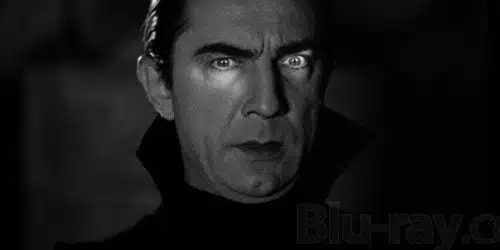
When it comes to good, old-fashioned creepiness, you can’t beat the classic Universal monster movies. From Dracula (1931) to Creature from the Black Lagoon (1954), Universal created a string of horror features that set the standard for the genre, and which still hold up to viewing today.
As part of their 100th anniversary celebration, and just in time for Halloween, Universal is releasing a Blu-Ray set of eight of their horror films, with a generous package of extras. These films feature a regular Murderer’s Row of monsters—Dracula, Frankenstein’s monster and his Bride, the Mummy, the Invisible Man, the Wolf Man, and the Creature from the Black Lagoon—and this collection is sure to please any horror fan or student of the art.
You may think you already know these films—goodness knows, they’ve been shown often enough on television—but chances are you really don’t. Rewatching them once again, I was amazed at how different they are from what I remembered.
To take one example, I first saw Tod Browning’s Dracula when it aired as part of a late-night Creature Feature series hosted by one Dr. San Guinary on KMTV in Omaha, Nebraska. Many of the films in the series featured guys in rubber suits or absurdly enlarged insects, but they also worked in some of the old classics (available thanks to the release to US television of two packages of Universal and Columbia horror films in the late ’50s). I was a teenager at the time, and about as unsophisticated as they come in terms of film appreciation, but even I could tell the difference–Dracula really had something going on, even if it wasn’t the kind of film that would normally be a bit hit among smartass teenagers.
Watching Dracula years later, I was surprised to see how close it comes to being a complete train wreck. Yes, Bela Lugosi is great (as he ought to be, after having played the role hundreds of times on stage), and Browning created some of the most creepily memorable images ever to grace the silver screen, but for long stretches of time there doesn’t seem to be anyone in charge on the set and the film lurches from cut to cut. Perhaps there’s a lesson here—if you create memorable enough images, an audience will forgive almost anything.
All the films in this collection create memorable images, but some offer quite a bit more as well. My personal favorite is James Whale’s The Bride of Frankenstein (1935), which builds on Whale’s 1931 Frankenstein while avoiding the dreaded curse of sequelitis—it’s no Jaws 2 or Halloween IV, in other words, but a further exploration of ideas set up in the original Frankenstein. The blend of diverse elements is what makes this film so great—the pathos of Boris Karloff as the monster set against the lunacity of Colin Clive as Henry Frankenstein, with a whole village of peasants from some never-was Central European country (including Una O’Connor whenever comic relief is required) and, best of all, Ernest Thesiger as sinister yet comical Dr. Pretorius (two words—dancing homunculi).
Karloff is also outstanding in the first Frankenstein (1931) and The Mummy (1932), and while the former is on practically everyone’s hit list, his performance in the latter is even more impressive. Karloff’s Ardath Bey/Imhotep is a sympathetic character who has absolutely nothing in common with the mummies featured in later exploitation flicks (the kind that walk about with stiff arms and legs in search people to murder) and Zita Johann is both lovely and mysterious as Helen Grosvenor, who may also be the reincarnation of Ankh-es-amon.
Claude Rains has the lead in two of these films: The Invisible Man (1933), which is both really scary and absolutely hilarious, and Phantom of the Opera (1943), the only color film in this collection. Phantom of the Opera is the one wooden nickel in this collection—it seems more dated than the earlier pictures (color cinematography just doesn’t seem to age well) and never achieves the mythic quality that make films like Frankenstein or the 1928 silent film version of Phantom more than just scary pictures. Still, this Phantom is gaudy and splendid in a mid-40s sort of way, and it won Oscars for Color Art Direction and Color Cinematography, so it certainly met the standards of its day.
Rains pops up again the The Wolf Man (1941), as father to the unfortunate Larry Talbot, played by Lon Chaney, Jr. Chaney wasn’t the most gifted actor, but he achieves a kind of pathos with his characterization, and the transformation effects by Jack Pierce are second to none. Finally, Creature from the Black Lagoon (1954) stands out among creature features of the ’50s for its ability to create sympathy for the Creature (played by Ricou Browning underwater and Ben Chapman on land).
There are so many extras included in this collection that I can’t even name them all. Every film comes with a documentary placing it in historical context, as well as at least one feature commentary by the likes of Rudy Behlmer, David Skal, or Scott MacQueen. The Spanish-language version of Dracula is included, as are biographical documentaries about several of the principals involved in these films, including makeup artist Jack Pierce and actors Bela Lugosi, Boris Karloff, and Lon Chaney, Jr. Many of these extras have been released with other editions of these films, but one which is brand new is a feature about the Dracula restoration. Finally, the DVD set comes with a 48-page booklet full of pictures and brief articles about the films and the people who worked on them. Taken as a whole, this collection provides a tidy little crash course in horror film, as well as hours of viewing enjoyment.

